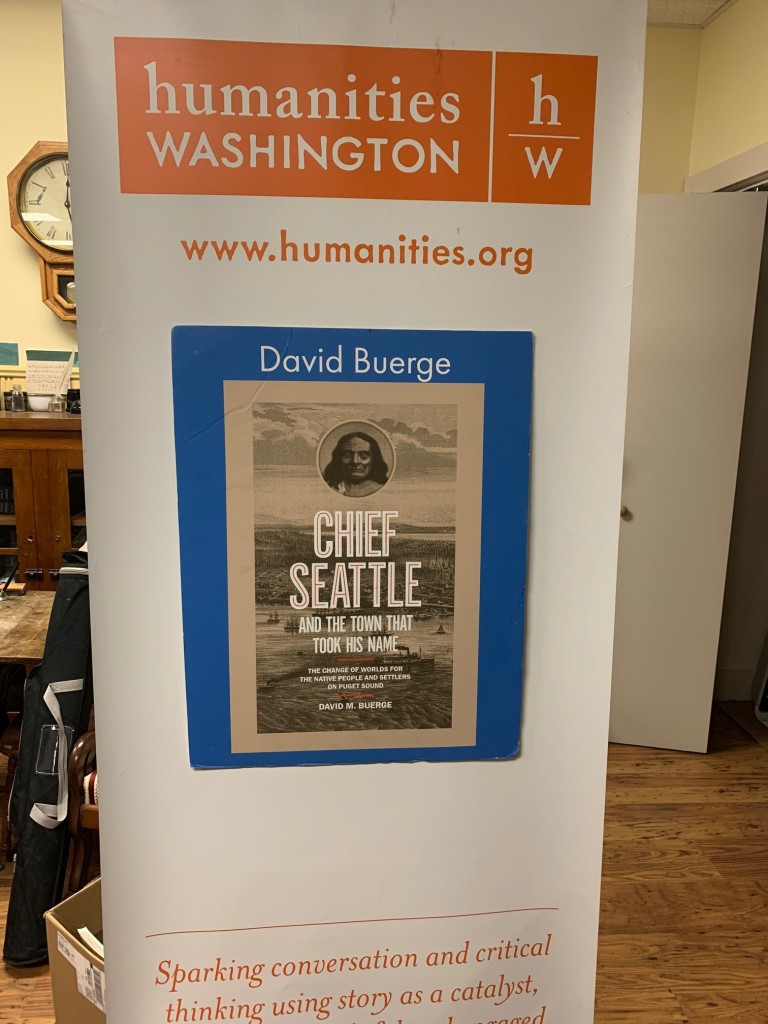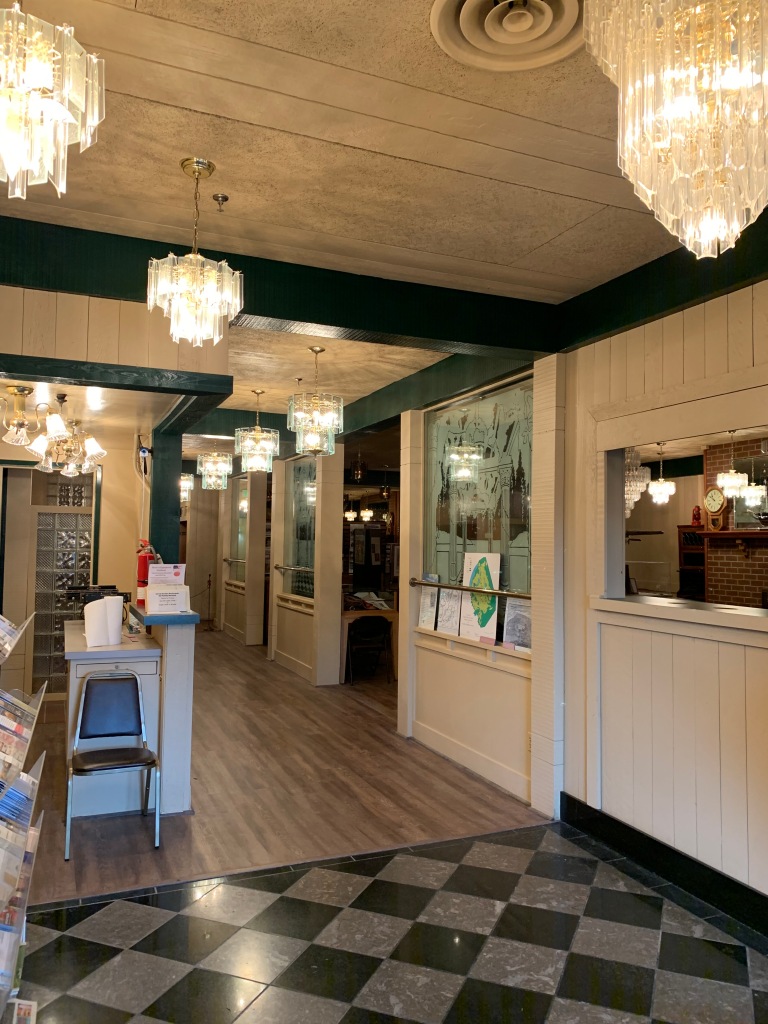Friday, December 13th, the Steilacoom Historical Museum was joined by Friends of the Steilacoom Library speaker series guest, David M. Buerge to discuss Seattle’s Namesake, Chief Seattle.
He is most noted for a great speech that has been widely translated, edited, and embellished throughout the years. So much so that, according to Buerge, “the speech obscures the man.”

It was pioneer Henry Allen Smith, an Ohio native, who first presented the speech on October 29, 1887 in the Seattle Sunday Star. As historical facts are often unreliable, so too are words. The speech would continue to emerge in other writings, morphing into whatever was needed as a means to the political gains of each author.
In the 1890’s, Frederick James Grant would publish the Smith version in his History of Seattle. Followed by Clarence B. Bagley’s History of King County, Washington. John M. Rich followed, where each took such liberties as adding additional lines.
Always, we return to the point of, ‘did he really say it?’, ‘Was it a letter, was it a speech?’…
It was a speech, but what he actually said largely debated, and we will likely never know.
Here’s what we do know, Chief Seattle, more accurately pronounced in two syllables: See-AT, was a notorious war leader. His mother was from the Duwamish tribe, and his father from the Suquamish. He was a respected diplomat for his people. He endeavored to live peacefully with early settlers, supporting, protecting, and helping them prosper.
He worked amicably with neighboring tribal leaders and early settlers as treaties were conceived, and lands exchanged. He advocated for intermarriages between natives and pioneers to further the assurance of stability for his people. He encouraged trade and helped create a fishery at Elliot Bay, with the infamous “Doc” Maynard. It was he who proposed the name of the city in 1952.
Sadly, as often seen throughout history, treaties were violated. According to Buerge, Chief Seattle would be exiled to the Suquamish reservation, after the promised Duwamish reservation was never honored. Chief Seattle would die there on June 7th, 1866. Many native tribes such as the Duwamish continue to be unrecognized federally to this day.
Buerge leaves us thoughtfully with the question, ‘Was he worthy to be the namesake of the city of Seattle’ with an emphatic, Yes! Is the city of Seattle worthy to have his namesake, maybe not.

Please join us at the museum on January 10th, 3 p.m.: John Jenson-The Roots of Rock ‘N’ Roll from the 1920s to the 1960s.
1801 Rainier St, Steilacoom, WA
(253) 584-4133
Published at:
https://thesubtimes.com/2019/12/20/chief-seattle-a-worthy-namesake/




